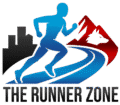This post contains affiliate links. If you click and buy, I may earn a commission at no extra cost to you. I only recommend brands and products that I personally trust and believe in.
1. My Running Journey
Table of Contents
ToggleWhen I first started running, I had no idea what I was doing. I thought I needed to go fast, I didn’t understand fueling, and I wore the wrong shoes.
And honestly, I almost gave up – more than once.
But that wasn’t the worst part. After finally finding my rhythm, I progressed too fast and developed serious knee issues. The doctor delivered a devastating blow: “You need to stop running.“
For someone who had struggled just to get started, it felt like a major setback.
All that hard-earned progress, gone – simply because I didn’t know better.
If any of that sounds familiar, you’re in the right place.
The last time I restarted running, I reminded myself: start slow. My pace was almost laughably slow, but I didn’t care. I knew I had to build from the ground up – the right way this time.
This guide is everything I wish someone had told me when I began.
From hard-learned lessons to the exact gear I use now, I’m sharing it all to help you avoid the same mistakes.
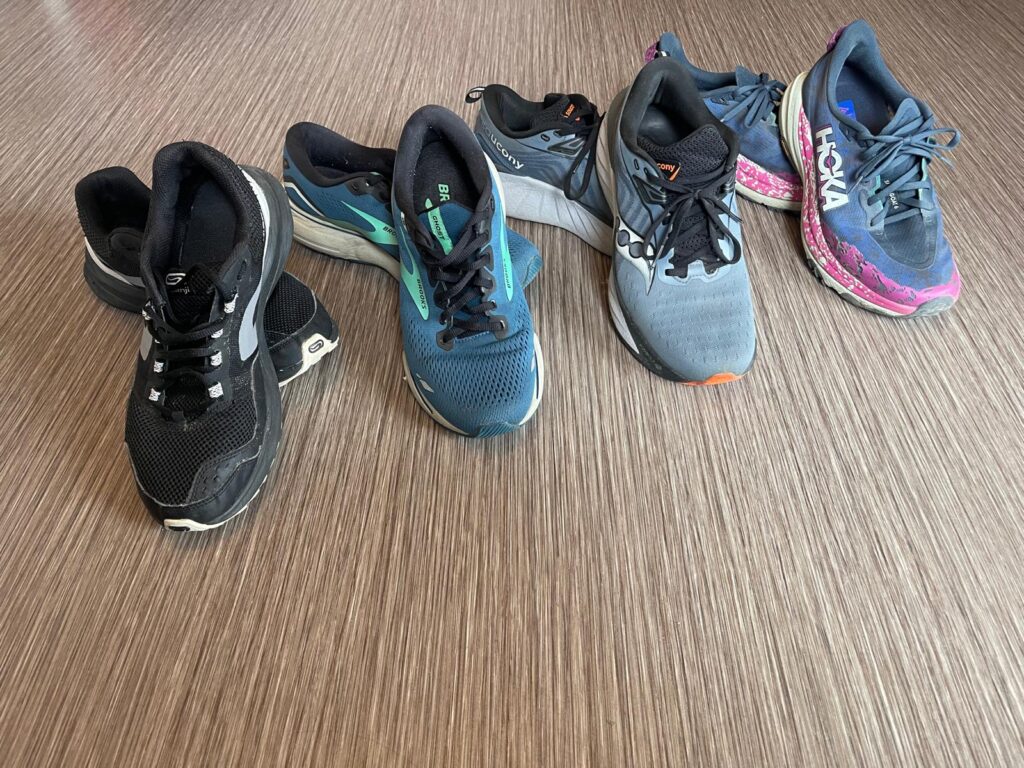
Chapter Summary: | Starting slow isn’t failure – it’s strategy. Consistency builds the running habit, speed comes naturally with time.
2. Forget Pace – Just Show Up
The biggest mistake new runners make? Trying to go fast. But speed doesn’t matter when you’re building the habit. I started slow. Really slow. I felt embarrassed and insecure. But I kept showing up. After a few weeks, something shifted – I started to enjoy it.
The Moment It Clicked
A moment I’ll never forget: I was doing a long run with my hydration vest fully loaded with water and gels when I saw another runner struggling, without any gear. It reminded me of when I was just starting out – I once saw someone like me now and thought, “Wow, that person must be going for hours. I can’t even run 30 minutes.” That day, I realized: I had become that person.
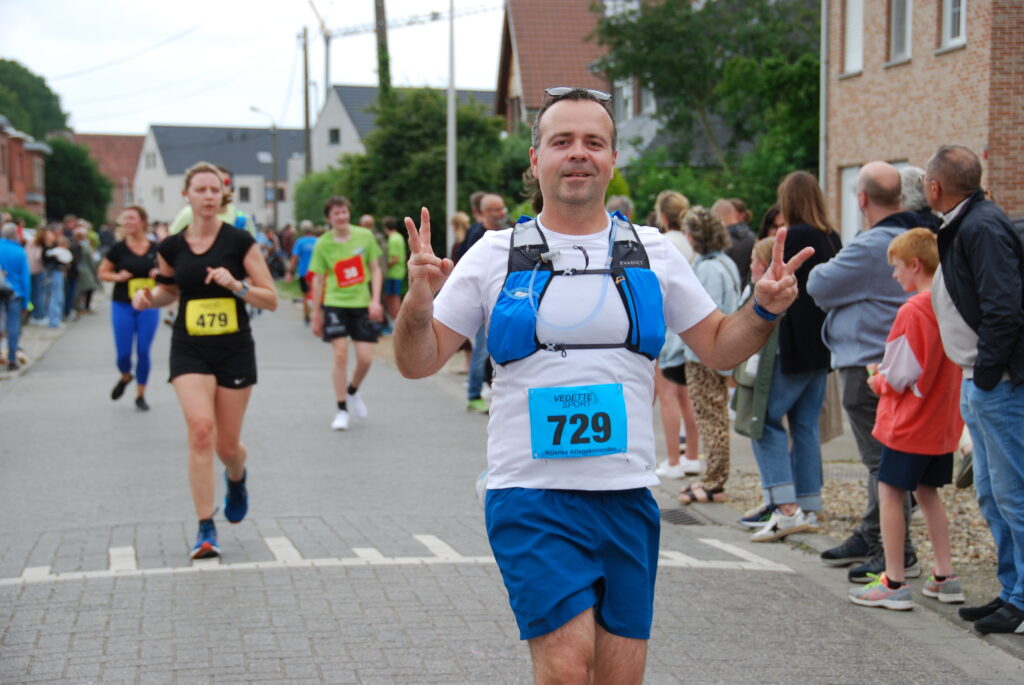
Tip: Your pace doesn’t matter. Your consistency does.
Reading Can’t Hurt Me by David Goggins helped me rethink what I’m capable of and pushed me to take discipline more seriously. It’s one of those books that challenges you to stop making excuses. Available in all formats – hardcover, paperback, and Kindle – but be warned: once you start, you’ll want to keep going.
Chapter Summary: | Focus on showing up consistently rather than running fast. Build the habit first, speed develops naturally over time.
3. Essential Gear That Actually Matters
I began with basic running clothes. The only three things I really paid attention to were:
- Shoes – I did a gait analysis and chose the best-fitting workhorse shoe based on the results. I walked into the store with a list of preferred models (after doing my own research online), but I ended up picking the shoe that felt best for my feet – because none of the fancy stuff matters if you have pain while running. I started with Brooks Ghost 15, which served me well as a beginner. After retiring them, I moved on to the Saucony Triumph 22 – a solid road running shoe that’s now nearing the end of its journey too. For the trails, I rely on the Hoka Speedgoat 6, which offers excellent grip and cushioning on uneven terrain-perfect for my off-road adventures.
- Socks – My journey began with Kiprun socks from Decathlon, which I still use for shorter runs. For longer distances, I upgraded to Injinji Trail Midweight Toesocks, which help prevent blisters and are surprisingly comfortable once you get used to them.
- A running watch – I chose the Garmin Forerunner 255 (standard edition without music) and have been happy with it. I have an inside joke about this watch – I promised myself I wouldn’t replace it until its battery lasts longer than my own endurance, so there’s still room to grow!
Building Your Gear Collection
Everything else? I added it progressively as I figured out what I needed for comfort, safety, and performance. Check out my complete Running Gear Guide where I share everything I’m currently using as well as what’s on my radar for future purchases.
Pro tip: Adapt your running clothes to the weather. In cold or rainy conditions, layering and technical fabrics matter more than you’d think.
Tip for beginners on a budget: Focus on proper shoes first. That’s your foundation. You can improvise the rest as you build confidence and consistency.
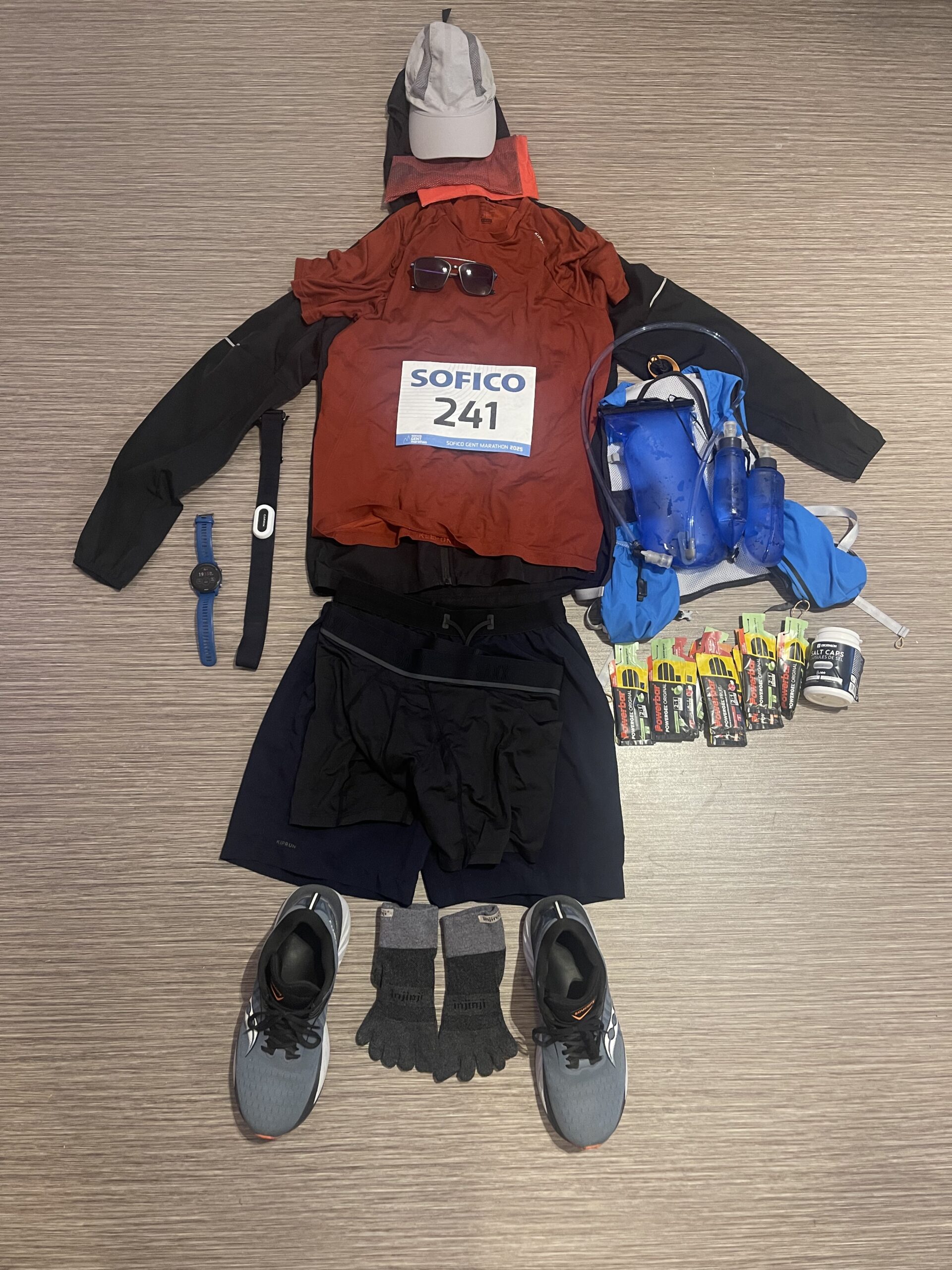
Chapter Summary: | Start with proper shoes, comfortable socks, and a running watch. Add other gear gradually as you discover what you need for your running style.
4. Nutrition & Hydration: The Game-Changers
Proper fueling and hydration dramatically impact your performance, even if you’re a beginner. You don’t need fancy products – just pay attention to:
The Basics
- Light, balanced pre-run meals
- Daily hydration (not just during the run)
- Post-run recovery meals with protein and complex carbs
- Testing what works for you before race day
Supplements That Helped Me
I’ve also used supplements, which are optional – but they helped me a lot and still do. Here are the ones that worked for me:
- Collagen peptides
- Vitamin C
- Omega-3 fish oil
- Magnesium
- Sodium tablets
My Hydration Revelation
I used to run regularly – short and long distances – without ever thinking about hydration. No water, no fuel, just pushing through. It wasn’t until I finally bought a hydration vest (Evadict 5L) that everything changed. That was the moment I started drinking water and fueling during my longer runs, and honestly, I was amazed by the difference.
Simply drinking water – not even talking about salt tablets or gels yet – made a huge impact. My endurance improved, I could focus better, and my recovery time dropped significantly. If I had known earlier how much of a game-changer hydration alone could be, I would’ve started way sooner.
Currently, I’m using Power Gel for my fueling needs, but I’m aiming to try other gels with more carbs in the future. The longer the race, the harder it is to consume the planned amount of gels, but more about this in one of my next posts dedicated to fueling.
Chapter Summary: | Hydration alone can transform your running. Start with water, add nutrition gradually, and always test strategies during training, not race day.
5. How to Prevent Common Running Injuries
I learned the hard way: prevention is far easier than recovery. Key habits that keep me injury-free:
- 5-minute dynamic warm-ups: full body
- Strength training: 1-2x per week – full body
- Stretching after runs (this is still on my wish list – guilty. I know it helps, but I still find excuses not to do it)
- Rest days: 1-2 days weekly with no running
- Follow the 10% rule: increase your mileage gradually
- Cross-train: swim, bike, or other low-impact activities
Sleep Is Non-Negotiable for Recovery
One of the most overlooked tools for staying injury-free? Sleep. Your muscles repair, hormones balance, and your brain resets while you sleep. If you’re consistently running on 5-6 hours of sleep, you’re sabotaging your progress – and increasing your risk of injury. Aim for 7-9 hours of quality sleep per night, especially during training weeks.
Chapter Summary: | Prevention beats treatment. Incorporate warm-ups, strength training, and adequate sleep into your routine. Follow the 10% rule for mileage increases.
6. How I Stay Motivated When I Don’t Want to Run
We all have off days. The following used to help me with motivation:
Quick Motivation Boosters:
- Mini goals – “Just run 10 minutes” usually becomes more
- Accountability – Text a friend or share a run online
- Visual cues – Lay out gear the night before
- Progress tracking – Use a calendar or app (Strava, Garmin Connect); completing little challenges and receiving badges are good motivations
- Positive self-talk – Encouraging mantras and quotes
You can think of running like a video game – but instead of an avatar, you’re leveling yourself up.
Beyond Motivation: Building Discipline
Now? I don’t rely on motivation. It helps you start, but it disappears quickly.
Instead, I rely on self-discipline.
When I struggle in the morning to get up and do my running before work, I remind myself: I HAVE NEVER REGRETTED GETTING IT DONE!
After finishing Can’t Hurt Me by David Goggins, I was hungry for more – and found his second book, Never Finished: Unshackle Your Mind and Win the War Within. It dives even deeper into recognizing your excuses, crushing them, and just getting it done. Available in hardcover, paperback, and Kindle.
Chapter Summary: | Motivation gets you started, but discipline keeps you going. Use small tricks to build consistency, then rely on habit and self-discipline.
7. The Mental Game of Running
Running is 80% mental. Here’s how I train my brain as much as my legs:
Mental Training Techniques:
- Chunking: I break my runs into small sections. Thinking only about the next hill or the next 10 minutes helps me stay present and makes long distances feel more manageable.
- Mindfulness: I don’t listen to music or podcasts during my runs. This is my time to be with my thoughts. I focus on my breathing, my form, and my surroundings – the rhythm of my feet on the ground, the wind on my face, the world passing by. It’s almost like therapy for me. Beyond improving my running, this time alone helps me clear my mind and put my thoughts in order.
- Celebrate small wins: Every run completed is progress. Not every day feels amazing, but finishing a run – even a tough one – is something to be proud of.
- Accept bad days: One bad run doesn’t define you. Everyone has off days. What matters is showing up again.
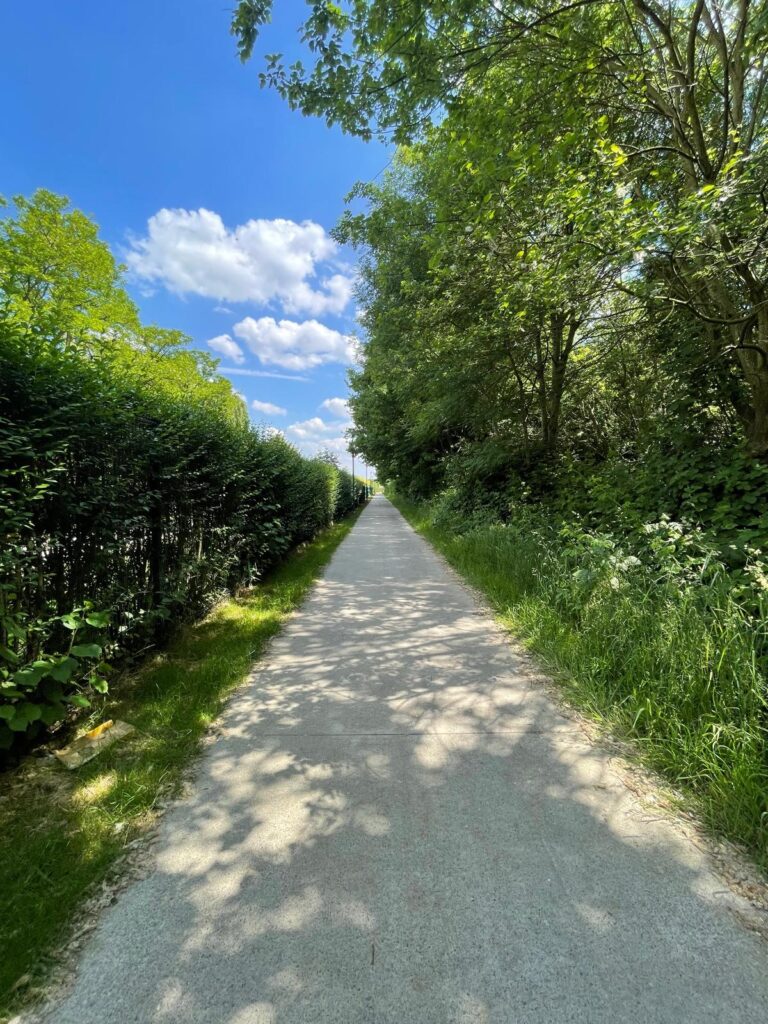

Discovering Runner’s High
I had already been running for several months when something unexpected happened: during an ordinary run, I suddenly started to smile – out of nowhere, a wave of happiness washed over me. I’d heard of “runner’s high” before but was always skeptical about it. Until that day. It was real, and I felt it. Since then, I’ve experienced it a few more times, and the fact that it doesn’t come often only makes me appreciate it even more when it does.
Chapter Summary: | Train your mind alongside your body. Use chunking, mindfulness, and positive self-talk to make running more enjoyable and sustainable.
8. Mistakes I Made (So You Don’t Have To)
Let me spare you the pain:
- Wore old, dead shoes
- Ignored warm-ups
- Increased mileage too fast
- Tried running every single day
- Compared myself to others
- Did static stretching before runs
- Neglected foam rolling
- Breathed shallowly
- Skipped core work
- Ran through pain thinking it was “normal” (byproduct of the Goggins mentality)
From Comparison to Curiosity
Tip: Instead of comparing myself to others, I started picking the brains of runners who were more experienced than me.
It turns out, most are happy to share what’s worked for them. They say comparison is the thief of joy (often attributed to Theodore Roosevelt) – and it’s true. But when you shift that mindset and turn comparison into curiosity, it becomes a powerful tool for growth.
Chapter Summary: | Learn from common beginner mistakes. Transform comparison into curiosity – experienced runners love sharing their knowledge.
9. Joining the Running Community
The running community is one of the most welcoming out there. You can find your tribe through:
- Local running stores’ group runs
- Weekly Parkrun events
- Strava clubs
- Local running clubs in your city
You’ll get motivation, advice, and sometimes – lifelong friends. During my runs with my hometown running community, I met a lot of runners with a wide range of experience. That network has become incredibly valuable – I now regularly lean on their insights whenever I encounter something new or unfamiliar. Chances are, someone else has already been through it and is more than willing to share what worked for them.
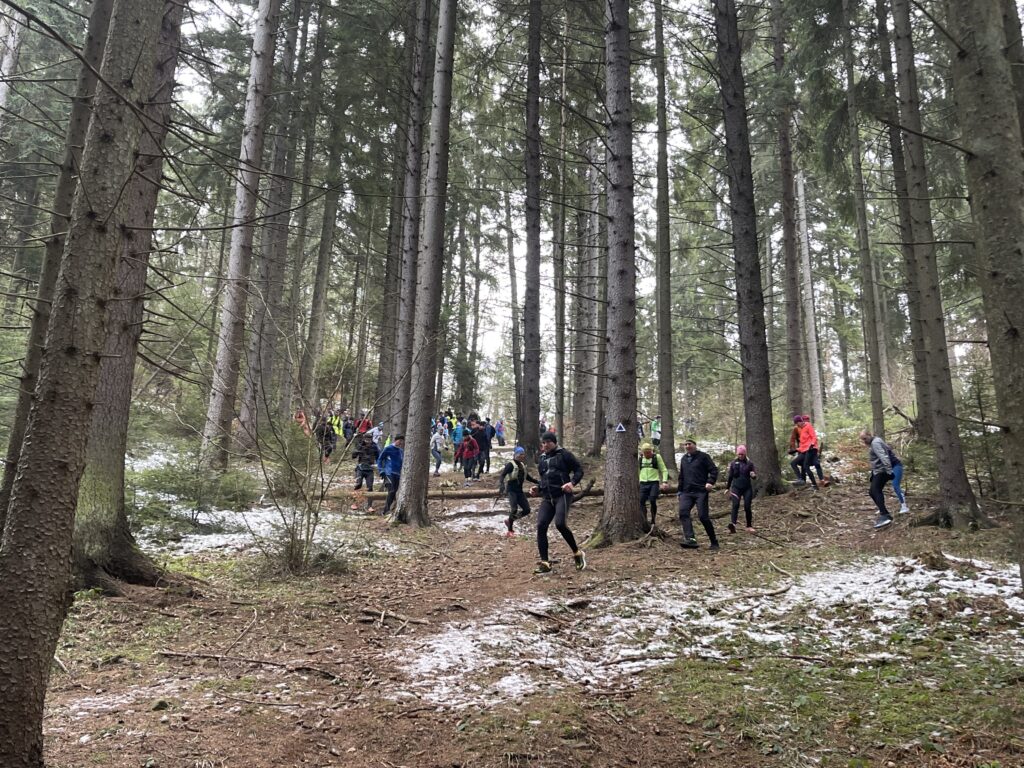
Chapter Summary: | The running community is incredibly welcoming. Join local groups or online communities for motivation, advice, and friendships.
10. Understanding Your Body’s Signals
Learning the difference between soreness and injury changed everything for me.
What’s Normal:
- Dull muscle aches
- Fatigue that fades with sleep
- Slight stiffness
Red Flags – Stop Running If You Experience:
- Sharp pain
- Pain that worsens during runs
- Pain that alters your stride
- Elevated resting heart rate
- Ongoing fatigue or irritability
A Lesson Learned the Hard Way
Rule of thumb: If pain changes your form – stop immediately. I learned this the hard way. I had a lingering discomfort in my knees – not intense pain, just a nagging ache that stuck around for several days. I took a short break from running, hoping it would go away on its own. When it didn’t fully subside, I decided to go for a run anyway. Big mistake. After just five minutes, the pain became unbearable, and I had to walk back home.
Luckily, I only lost a few days of training to this experience – but I gained a valuable lesson: it’s better to voluntarily sacrifice a few running days than to be forced into a longer break due to injury. Listening to your body isn’t a sign of weakness – it’s a strategy for longevity.
I have a lot of injury stories which I will treat in a dedicated post, where I’ll go deeper into common runner injuries and how to avoid them.
Chapter Summary: | Learn to distinguish between normal soreness and injury signals. When in doubt, rest – prevention is always better than forced recovery.
11. The Goal Framework I Recommend
My Goal Ladder Approach
What worked for me was creating a goal ladder – a gradual, structured way to build momentum and confidence:
- Immediate (1 month): Run 2-3 times a week
- Short-Term (3 months): Run 5K without walking
- Mid-Term (6 months): Improve your 5K time and run a 10K
- Long-Term (±1 year): Run a half marathon
- Long-Term (±2 years): Run a marathon
- Long-Term (2+ years): Become a mountain ultra runner
This ladder gave me direction, but I stayed flexible within it. For example, when I first aimed for a half marathon, I ran a test half marathon race without going all in – just to get a feel for the distance. Then I trained more seriously and did a true “all-in” half marathon. I followed a similar process for the marathon: a first trial run to understand the challenge, and now I’m preparing for my first real marathon effort.
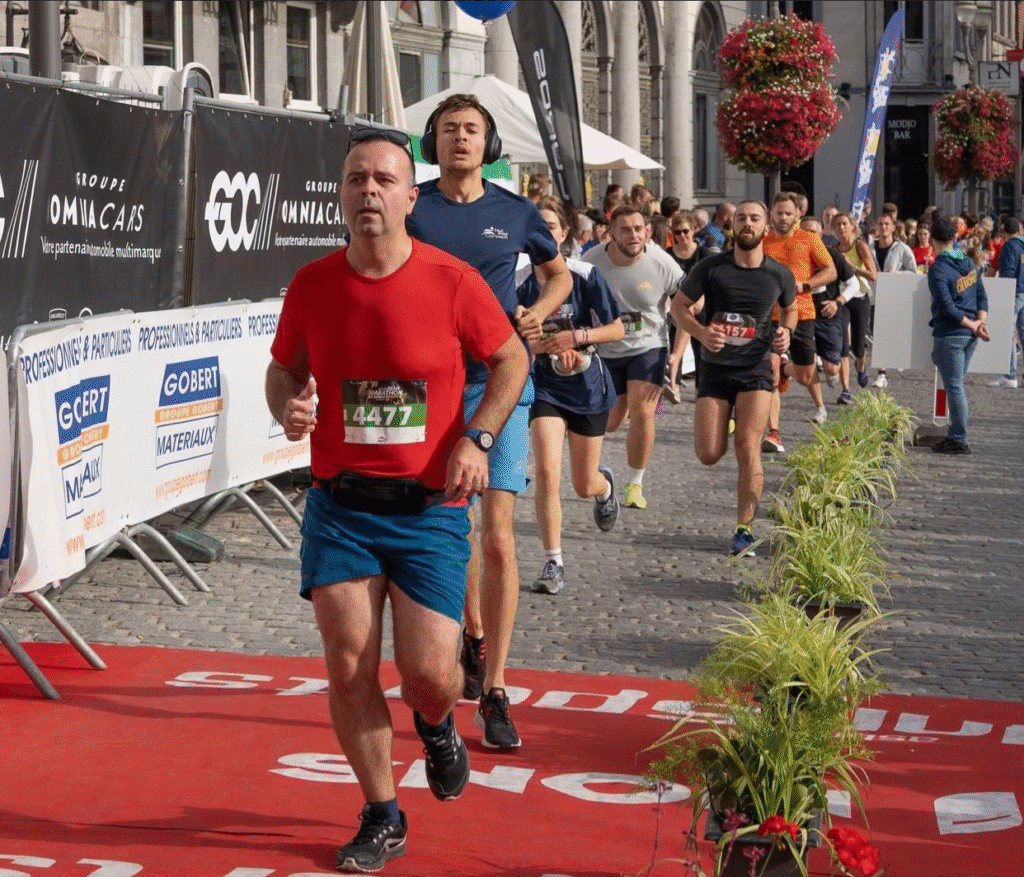
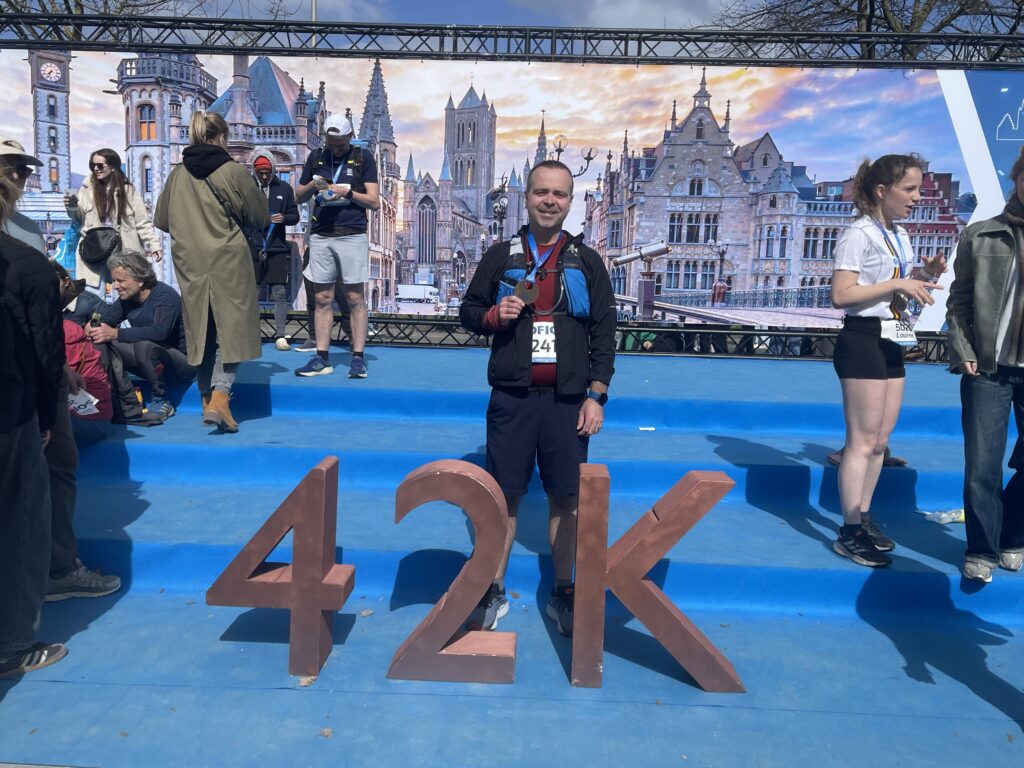
Along the way, I sprinkled in shorter races. They made training more fun, gave me little milestones to aim for, and kept me motivated. I always moved to the next distance only when I felt comfortable with the previous one – and then gave myself time to get comfortable at that new level. No rushing.
Since my ultimate goal is to become a mountain ultra runner, building myself up gradually is crucial. I know it’s a long road, and I try to be patient (it is much harder than I thought). When I was transitioning between half marathons and full marathons, I started doing trail runs that were somewhere in between in distance – but the elevation gain made them even more demanding than the road races. Those trails added both physical challenge and mental stimulation, which I loved.
This framework helped me stay focused, motivated, and injury-free (learning by doing). That said, this is just what worked for me. Everyone’s journey is different, and it’s important to find your own pace, your own rhythm, and your own goals. Progress isn’t one-size-fits-all – and that’s the beauty of it.
Chapter Summary: | Create a goal ladder with progressive targets. Stay flexible, test distances before committing, and remember that everyone’s journey is unique.
12. Track Your Growth
Progress isn’t always about pace or distance – it’s also about how you feel and how consistent you are. Tracking your journey helps you stay motivated and notice improvements you might otherwise miss.
Ways to Track Your Progress
Here are a few ways to do it:
- Use a running log or app to record your workouts
- Write monthly progress notes to reflect on how far you’ve come
- Take photos and track your mood to capture the emotional side of running
- Note invisible gains like better sleep, more energy, or increased confidence
Personally, I’ve used Strava since my early running days – it’s great for logging runs and connecting with other runners. More recently, I started using Garmin Connect, which has been a game-changer thanks to its adaptive running plans. Between the two, I get all the data I need and a supportive community that keeps me motivated. Whether it’s kudos on a tough run or advice when something feels off, that connection makes a big difference.
Chapter Summary: | Track both quantitative metrics and qualitative feelings. Apps like Strava and Garmin Connect provide data and community support.
13. The Power of Sleep for Runners
Sleep is the secret weapon most beginners ignore. It doesn’t just help with injury prevention – it affects your motivation, mental resilience, and running performance.
While you sleep:
- Muscles repair themselves
- Your heart and lungs recover
- Your immune system strengthens
- Mental fatigue is reduced
Without enough sleep:
- You’re more likely to skip runs
- Injuries become more frequent
- Progress slows down, even if training is consistent
Prioritize sleep like you prioritize workouts. Set a bedtime, limit screen time, and aim for at least 7-9 hours each night – especially during intense training phases or after long runs. (I usually sleep around 7 hours per night, but when the balance tips above 7 hours I feel significantly better than when it dips below 7).
Of course, sleep quality isn’t always perfect – everyday stress combined with training load can throw it off. But just like a river eventually finds its way back to its bed, sticking to a healthy bedtime routine always helps things settle back into place.
Garmin users will understand: no mythical sleep badge in the near future for me. Seriously, if that badge ever shows up, I’m framing it like a race medal ;).
Chapter Summary: | Sleep is as important as training. Aim for 7-9 hours nightly for optimal recovery, injury prevention, and performance.
15. FAQ
Q: How often should a beginner run?
A: Start with 2-3 times per week, allowing rest days between runs for recovery. This helps build the habit while preventing overuse injuries.
Q: What’s the best running pace for beginners?
A: Focus on a conversational pace – you should be able to talk while running. If you’re gasping for breath, slow down. Speed develops naturally with consistency.
Q: Do I need expensive running gear to start?
A: No. Focus on proper running shoes first – that’s your foundation. You can start with basic athletic clothes and add gear gradually as you discover what you need.
Q: How long should my first runs be?
A: Depending on your fitness level, start with run/walk intervals. Try running for 1-2 minutes, then walking for 1-2 minutes. Gradually increase the running portions as you build endurance.
Q: What should I do if I feel pain while running?
A: Stop immediately if you experience sharp pain or pain that changes your running form. Dull muscle soreness is normal, but persistent or sharp pain could indicate injury.
Q: How do I prevent running injuries?
A: Follow the 10% rule (increase mileage by no more than 10% weekly), include rest days, do dynamic warm-ups, and listen to your body’s signals.
Q: Should I stretch before running?
A: Do dynamic warm-ups before running, not static stretching. Save static stretching for after your run when your muscles are warm.
Q: How do I stay motivated to run regularly?
A: Start with small, achievable goals. Lay out your gear the night before, track your progress, and remember that building the habit is more important than running fast or far.
Chapter Summary: | Address common beginner questions about frequency, pace, gear, duration, pain management, injury prevention, stretching, and motivation to provide a comprehensive reference for new runners.
14. Conclusion: Let’s Run Together
Running changed my life – and now I want to help you start your journey without all the confusion and setbacks I went through.
When I (re)started running, I had no idea where to begin. I didn’t want to repeat my old mistakes by just grabbing a random pair of cheap running shoes and hitting the road. It might seem as simple as putting one foot in front of the other, but there’s actually a lot more to it. I had to research everything – and honestly, the more I read, the more confused I got.
Questions like: What gear do I really need? How do I actually start running without burning out? What’s a running pace? How fast should I go? …just to name a few.
As we’ve covered today, starting with the right shoes, comfortable clothing, and a sustainable run/walk approach will set you up for long-term success rather than short-term burnout. Remember: consistency beats intensity when you’re just beginning.
This blog post is the first in a series where I’ll answer the many little (and big) questions beginner runners often have – including the ones I had myself. And as I progress in my own running journey, I’ll share new insights, mistakes, lessons, and wins along the way.
Coming Next: How to Actually Start Running
In my next post, I’ll share my detailed guide on the exact run walk method I used to build endurance without injury. This approach is based on the proven Run Walk Run Method developed by Jeff Galloway, a former Olympian and the pioneer of this strategy. You’ll learn how to structure your first runs, when to increase time or distance, and how to make the transition from walking to running in a way that’s sustainable and enjoyable. This is the foundation I wish I’d had when starting out!
Did you find this guide helpful? What other running tips or beginner struggles would you like me to cover?
Let me know in the comments below – and let’s run this journey together.
Chapter Summary: | Start your running journey with the right foundation – proper shoes, comfortable clothing, and a sustainable approach. Consistency beats intensity for beginners, and learning from others’ experiences will help you avoid common pitfalls.
